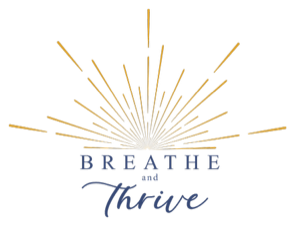
Myofunctional therapy or “myo” as it is often referred to, is an exercise-based therapy program used to correct improper function of the orofacial muscles. Think of it like physical therapy for the muscles of the mouth, tongue, and face. The exercises are designed specifically to remove orofacial myofunctional disorders (OMDs) that may affect facial skeletal growth, chewing, swallowing, speech production, TMJ dysfunction, cervical neck tension, dental malocclusion, and facial esthetics. Some of the most common OMDs include:
- Habitual mouth breathing
- Low tongue resting posture
- Lip incompetence
- Tongue thrust swallow
- Habitual sucking
- Jaw or facial muscle over activation
- Low tone of orofacial muscle
Four Goals of Therapy
Nasal Breathing
Proper Tongue Posture
Lips Sealed
Correct Swallow Pattern
Recent research has shown that myofunctional therapy may reduce the symptoms of sleep disordered breathing (such as snoring) and improve mild to moderate obstructive sleep apnea. It is thought that targeted exercises improve orofacial and oropharyngeal muscle tone and promote proper tongue resting posture, all which help prevent or decrease airway obstruction during sleep. Myofunctional therapy can be used alone or in combination with CPAP or oral appliance therapy to improve treatment outcomes.
Myofunctional therapy exercises play a vital role in the preparation for tongue tie surgery. Training and strengthening the tongue to hold proper positioning during surgery is an important part of completing a safe and effective release in older children and adults. After surgery, our myofunctional therapist guides patients through the early days of healing to reduce the chance of scarring or reattachment. Remaining therapy sessions focus on restoring optimal function with the patient’s newly improved tongue mobility.

Myofunctional therapy is specifically valuable for growing children and can be useful to help restore nasal breathing in children. Nasal breathing has been shown to increase immunity, decreases inflammation in the tonsils & adenoids, and can settle the nervous system to help reduce symptoms of hyperactivity and anxiety. Along with nasal breathing, training the muscles of the mouth and face to habitually work in biologic harmony supports proper growth of the teeth and jaws. In some cases, myofunctional therapy can even prevent the need for future orthodontics!
Thumb Sucking & Pacifier Habits
Thumb Sucking and pacifier use are common in the pediatric population. While these habits initially help to soothe children, when they are excessive or continue beyond early childhood, they can create problems with normal orofacial development. We consider the age of the child as well as the intensity, frequency, and duration of the habit to determine if intervention is necessary. If your child’s sucking habit is happening throughout the day and night or is continuing beyond the age of 3, intervention may be recommended. Sucking habits can affect the growth and development of the face and jaws, and children can develop open bites, cross bites, low lip tone, low tongue posture and long, narrow faces. These resulting structural problems can then contribute to challenges with speech, sleep, eating and digestion.
In children who successfully stop the habit on their own, previously adapted muscular dysfunctions can persist. In these cases, myofunctional therapy is recommended to relearn proper oral rest posture and swallowing. A tongue thrust swallow pattern is often retained in children with a history of sucking habits, and left unaddressed, it can contribute to poorly developed dental arches that are challenging and costly to correct.

In general, the sooner a problem is identified and addressed, the better! Set up a consultation with our myofunctional therapist to see if your child would benefit from therapy.
Getting Started
Assessment
It is important to have a therapy program tailored to each patient’s unique orofacial myofunctional disorder (OMD). To start, our myofunctional therapist meets with patients to identify their specific patterns of dysfunction and develops a therapy program designed to meet each patient’s specific needs and goals. This includes screening for structural issues that can hinder treatment goals including tongue or lip ties, nasal obstruction, tonsillar enlargement, and inadequate tongue space.
Sessions
Therapy sessions can be conducted in-person or virtual depending on each patient’s needs and schedule. Active participation during each session and completion of prescribed home exercises is necessary to achieve optimal results from a therapy program. The timing and number of sessions needed may vary on a case-by-case basis.
Success!
Patients that have successfully completed myofunctional therapy programs report improved sleep, mental calm and clarity, better facial symmetry, improved bite, and reduction of facial, neck and jaw tension.
Call our office today to see what myofunctional therapy can do for you!




